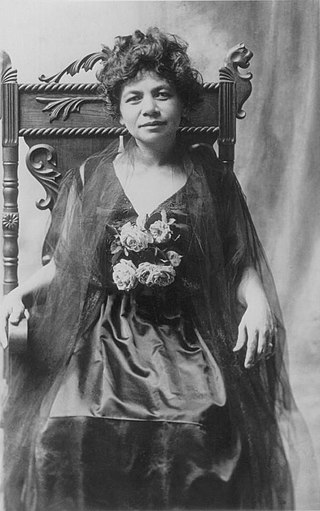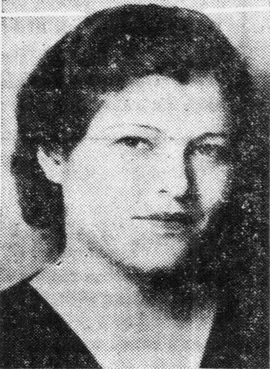
Since Hawaii became a state in 1959, it has sent congressional delegations to the United States Senate and United States House of Representatives. Each state elects two senators to serve for six years. Members of the House of Representatives are elected to two-year terms, one from each of Hawaii's congressional districts. Before becoming a state, the Territory of Hawaii elected a non-voting delegate at-large to Congress from 1900 to 1958.

Politics of the United States Virgin Islands takes place in a framework of a presidential representative democratic dependency, whereby the Governor is the head of the territory's government, and of a multi-party system. United States Virgin Islands are an unincorporated and organized territory of the United States, administered by the Office of Insular Affairs of the United States Department of the Interior. Executive power is exercised by the local government of the Virgin Islands. The judiciary is independent of the executive and the legislature.

The Hawaii State Legislature is the state legislature of the U.S. state of Hawaii. The state legislature is a bicameral body consisting of a lower house, the Hawaii State House of Representatives, with 51 representatives, and an upper house, the 25-member Hawaii State Senate. There are a total of 76 lawmakers in the legislature, each representing single member districts across the islands. The powers of the legislature are granted under Article III of the Constitution of Hawaii. The legislature convenes at the Hawaii State Capitol building in the state capital of Honolulu, on the island of Oahu.

The Territory of Alaska or Alaska Territory was an organized incorporated territory of the United States from August 24, 1912, until Alaska was granted statehood on January 3, 1959. The territory was previously Russian America, 1784–1867; the Department of Alaska, 1867–1884; and the District of Alaska, 1884–1912.

In United States law, an organic act is an act of the United States Congress that establishes a territory of the United States and specifies how it is to be governed, or an agency to manage certain federal lands. In the absence of an organic law a territory is classified as unorganized.

The Territory of Hawaii or Hawaii Territory was an organized incorporated territory of the United States that existed from April 30, 1900, until August 21, 1959, when most of its territory, excluding Palmyra Island, was admitted to the United States as the 50th U.S. state, the State of Hawaii. The Hawaii Admission Act specified that the State of Hawaii would not include Palmyra Island, the Midway Islands, Kingman Reef, and Johnston Atoll, which includes Johnston Island and Sand Island.

Patsy Matsu Mink was an American attorney and politician from the U.S. state of Hawaii. She served in the United States House of Representatives for 24 years as a member of the Democratic Party, initially from 1965 to 1977, and again from 1990 until her death in 2002. She was the first woman of color and the first Asian-American woman elected to Congress, and is known for her work on legislation advancing women's rights and education.
The Hawaiian Independent Party, was a political party active in Hawaii from 1900 to 1912, during which time Hawaii was controlled by the United States and administered as the Territory of Hawaii. The Party was established by Robert Wilcox, immediately after the United States annexed the Hawaiian Islands with the Newlands Resolution in 1898 and established the Territory of Hawaii with the Hawaiian Organic Act in 1900. The party was formed to represent and advocate for the rights and interests of Native Hawaiians, many of whom were then inclined to believe that both the Democratic Party of Hawai‘i and Hawai‘i Republican Party were yet incapable of representing them.

The Hawaii Republican Party is the affiliate of the Republican Party (GOP) in Hawaii, headquartered in Honolulu. The party was initially strong during Hawaii's territorial days, but following statehood the Democratic Party has become the dominant party in Hawaii. The party currently has very weak electoral power in the state and is one of the weakest affiliates of the national Republican Party; it currently controls none of Hawaii's statewide or federal elected offices.

The Alaska Statehood Act was introduced by Delegate E.L. Bob Bartlett and signed by President Dwight D. Eisenhower on July 7, 1958. As a result, Alaska became the 49th U.S. state on January 3, 1959. The law was the culmination of a multi-decade effort by many prominent Alaskans, including Bartlett, Ernest Gruening, Bill Egan, Bob Atwood, and Ted Stevens.
At large is a description for members of a governing body who are elected or appointed to represent a whole membership or population, rather than a subset. In multi-hierarchical bodies, the term rarely extends to a tier beneath the highest division. A contrast is implied, with certain electoral districts or narrower divisions. It can be given to the associated territory, if any, to denote its undivided nature, in a specific context. Unambiguous synonyms are the prefixes of cross-, all- or whole-, such as cross-membership, or all-state.

The Utah State Legislature is the state legislature of the U.S. state of Utah. It is a bicameral body, comprising the Utah House of Representatives, with 75 state representatives, and the Utah Senate, with 29 state senators. There are no term limits for either chamber.

The Legislature of Guam is the law-making body for the United States territory of Guam. The unicameral legislative branch consists of fifteen senators, each serving for a two-year term. All members of the legislature are elected at-large with the island under one whole district. After the enactment of the Guam Organic Act in 1950, the First Guam Legislature was elected composing of 21 elected members. Today, the current fifteen-member 37th Guam Legislature was elected in November 2022.

The Legislature of the Virgin Islands is the territorial legislature of the United States Virgin Islands. The legislative branch of the unincorporated U.S. territory is unicameral, with a single house consisting of 15 senators, elected to two-year terms without term limits. The legislature meets in Charlotte Amalie on the island of St. Thomas.

The Hawaiian Organic Act, Pub. L. 56–339, 31 Stat. 141, enacted April 30, 1900, was an organic act enacted by the United States Congress to establish the Territory of Hawaii and to provide a Constitution and government for the territory. The Act was replaced by the Hawaii Admission Act on August 21, 1959, when the territory was admitted to the Union as the State of Hawaii.
The Minnesota Territorial Legislature was a bicameral legislative body created by the United States Congress in 1849 as the legislative branch of the government of the Territory of Minnesota. The upper chamber, the Council, and the lower chamber, the House of Representatives, first convened on September 3, 1849. The two chambers served as the territory's legislative body until Minnesota was admitted as a state on May 11, 1858, when the Territorial Legislature was replaced by the Minnesota Legislature.

Mary Haʻaheo Atcherley was a Hawaiian activist. She was one of the first native Hawaiian women to run for public office in the Territory of Hawaii.

Thelma Alice Kalaokona Moore Akana Harrison was an American public health nurse and politician who served as a Republican Senator for Oahu in the Hawaii Territorial Legislature. She was the first woman to be reelected to the Territorial Senate.

Flora Kekulalani Kaai Hayes was a Hawaiian-American politician and actor. She served in the Hawaii Territorial House of Representatives for seven terms between 1938 and 1959, representing Oahu as a member of the Hawaii Republican Party. From the 1920s through the early 1930s, Hayes became involved in various Hawaiian organizations. In 1936, she was elected president of the Territory of Hawaii's parent–teacher association (PTA), serving two terms. At the request of John Ford, she stopped in Hollywood while traveling back from a PTA conference in Virginia to play a minor role in the 1937 film The Hurricane.
The election of women to the Hawaii Territorial Legislature was a complex process. Women did not have the right to vote in the Republic of Hawaii after the overthrow of the Hawaiian Kingdom. Upon the passage of the Nineteenth Amendment to the United States Constitution, women gained suffrage almost immediately began seeking election to the Territorial Legislature, but the Hawaiian Organic Act dictated that only "a male citizen of the United States" could hold territorial office.


















